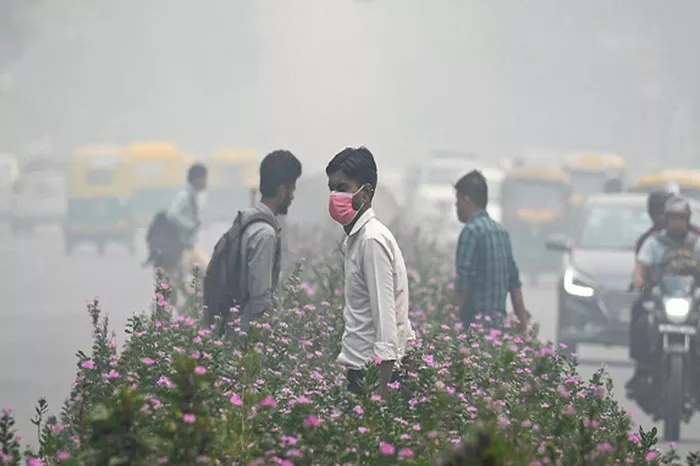The national capital once again faces severe air pollution, with a thick layer of smog blanketing the city on Friday morning. The Air Quality Index (AQI) surged to 293, placing it under the ‘Poor’ category, raising concerns about the potential health impacts. The Central Pollution Control Board warned that such levels of poor air quality can lead to breathing issues for most individuals. Prolonged exposure to even worse air conditions, classified as ‘Very Poor,’ may cause serious respiratory illnesses.
Environmental factors affecting health have become a critical issue, particularly for eye health. This is notably significant in Bengaluru, often referred to as the “allergy capital of India,” where the rise of urban pollution is further exacerbating eye-related problems.
Dr. K. Harsha, Head of Clinical Services at Dr. Agarwal’s Eye Hospital in Banashankari, Bengaluru, explained to News9 that the rapid pace of urbanization has contributed to an increase in outdoor irritants, triggering a range of eye allergies. “The most common complaints in outpatient departments (OPDs) at eye hospitals are allergy-related issues,” he said.
Common Outdoor Irritants That Cause Eye Allergies
Outdoor irritants that commonly lead to eye allergies include:
Pollen: Pollen can cause allergic conjunctivitis. Symptoms worsen on hot, dry, and windy days, as pollen enters the eyes, triggering the release of histamines, which cause blood vessels in the conjunctiva to swell.
Dust: In urban areas, dust mixed with pollution particles remains a significant irritant, particularly in densely populated regions.
Mould: Mould spores proliferate in damp environments, and exposure to these spores, either by inhalation or direct contact with the eyes, often leads to allergic reactions.
Paint Fumes and Smoke: Fumes from paint and vehicle exhaust can cause eye irritation, along with other short-term effects like headaches, nausea, and dizziness.
Symptoms of Eye Allergies
Individuals affected by outdoor irritants may experience various symptoms, including:
Redness: Inflamed blood vessels.
Watering: Excessive tear production.
Itching: Persistent itching can lead to further irritation.
Light Sensitivity: Bright lights may become uncomfortable.
Eyelid Swelling: Swelling of the eyelids due to inflammation.
Discharge: Watery or mucous discharge from the eyes.
Burning Sensation: A warm or irritating feeling in the eyes.
People with a strong family history of allergies are more prone to these symptoms.
How Outdoor Irritants Trigger Eye Allergies
The mechanism behind these allergies begins with exposure to an allergen, often in childhood. This exposure sensitizes the eye, leading to the production of Immunoglobulin E (IgE), a type of antibody. Subsequent encounters with the allergen can cause a rapid immune response, with IgE triggering histamine release, resulting in immediate allergy symptoms that may develop within seconds or minutes.
Tips to Minimize Eye Allergy Symptoms
While it may be difficult to avoid allergens entirely, there are ways to minimize the effects of eye allergies:
- Wear protective eyewear when going outdoors.
- Wash your eyes with clean water after any outdoor exposure.
- Apply cold compresses using ice packs or a clean, damp cloth to get quick relief from symptoms.
- In cases of severe symptoms, consult an ophthalmologist for proper treatment.
- Antihistamines, lubricants, and steroid eye drops may be prescribed, depending on the severity of the symptoms.
With New Delhi’s air quality continuing to deteriorate, it is crucial to take proactive measures to safeguard both respiratory and eye health during this time of year.
Related topic:
What Is the Best Homeopathic Remedy for Puffy Eyes?
15 Simple Home Remedies for Dry Eyes
5 Best Home Remedies for White Bumps Under Eyes


